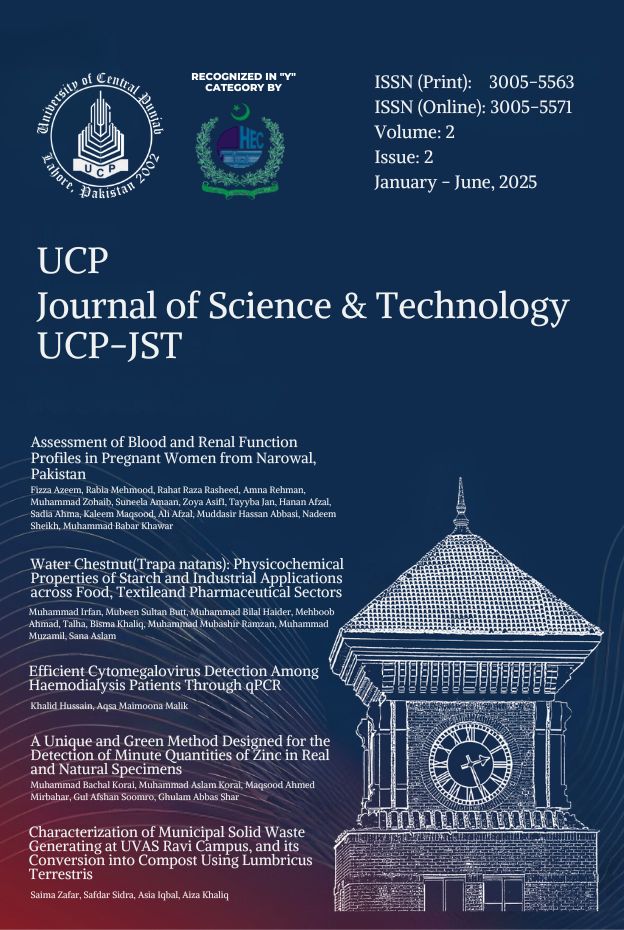A Unique and Green Method Designed for the Detection ofMinute Quantities of Zinc in Real and Natural Specimens
DOI:
https://doi.org/10.24312/ucp-jst.02.02.399Keywords:
Zinc, Cetyltrimethylammonium bromide, 1-(2-Thiazolylazo)-2-naphthol, ComplexationAbstract
In this study, we have developed an easy and fast spectrophotometric procedure to analyse zinc in traces using a reagent 1-(2-thiazolylazo)-2-naphthol (TAN) in surfactant cetyltrimethylammonium bromide (CTAB) solution. Zinc complexes with 1-(2-thiazolylazo)-2-naphthol to give bis[1-(2-thiazolylazo)-2-naphthol]zinc. Demonstrated spectrophotometric method has been of great significance as using the micellar system instead of toxic, expensive and time taking extraction method. This method presented an improved detecting efficacy, sensitivity and coefficient of molar absorption. The Sandel's sensitivity and molar absorption coefficient were determined to be 4.5 ngcm-2 and ε 1.96×104 L mol-1cm-1 at λmax 581.4 nm, respectively. The 1:2 ratio was observed for Zn-[TAN]2 development. Linear calibration curve was obtained within 0.12-4.0 μg mL-1. At pH 6.5, complex formation occurred and remained stable for 24 hrs. Our recommended procedure was applied successfully for the investigation of Zinc from various alloy, ecological, pharmaceutical and biological specimens.
Downloads
Published
Issue
Section
License
Copyright (c) 2025 UCP Journal of Science & Technology

This work is licensed under a Creative Commons Attribution 4.0 International License.







